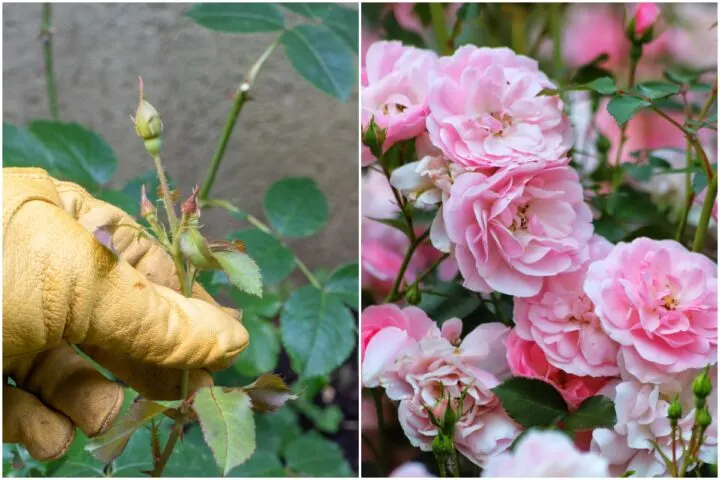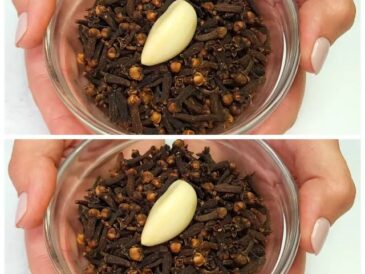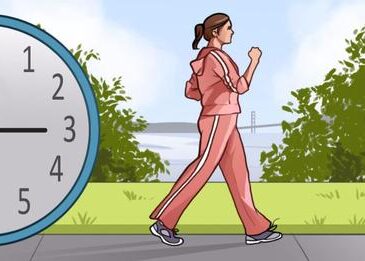Step 3: Locate the Node

Identify a node (the point where a leaf or branch attaches to the stem) that is facing outward and has at least five leaflets. This node is where the new flower bud will emerge after deadheading.
Step 4: Make the Cut

You want to cut at a 45-degree angle, about 1/4 inch above the node. By cutting close to the node, you aren’t leaving a long piece of stem to rot and invite disease.
Step 5: Dispose of Spent Flowers

Collect the deadheaded flowers and compost them. If they show signs of disease, it’s best to throw them out. You don’t want to introduce anything into your garden via infected compost.
Step 6: Wash, Rinse, Repeat
You’ll want to continue deadheading throughout the blooming season to encourage nonstop flower production. As new blooms appear and the old ones fade, repeat the deadheading process to keep your rose bushes healthy and blooming all summer long.
Don’t forget to stop and smell them occasionally.
When Not to Deadhead Roses
While deadheading is generally beneficial for most rose varieties, there is a situation where you might want to skip this practice – when you want rosehips.
Growing Rosehips

Rosehips form after the flower has finished blooming, and these seed pods can be enjoyed by humans and wildlife alike. (And really, there are so many excellent reasons to collect rosehips at the end of the season.) If you’re growing roses with the goal of sipping rosehip tea from your garden this winter, then deadheading isn’t the way to go.
Likewise, rosehips can be a source of food for birds and other animals during the colder months of the year.
By deadheading flowers, you’re removing that food source from your garden.

If you want bountiful rosehips, then skip the deadheading and tidy up your rosebush without removing the spent bloom. (You can pull the dead and faded petals off.)
But, you can have the best of both worlds, more blooms and rosehips, too, by deadheading only once or twice during the blooming season. However, if you continue too long into the season, you may end up with little to no rosehips.
And that’s all there is to it.
Deadheading roses isn’t just another chore to add to your gardening list but an important task that makes a summer of continuously blooming roses possible. And who wouldn’t love that?
So, the next time you stroll through your garden and stop to smell the roses, don’t forget to check to see if any need to be deadheaded.




